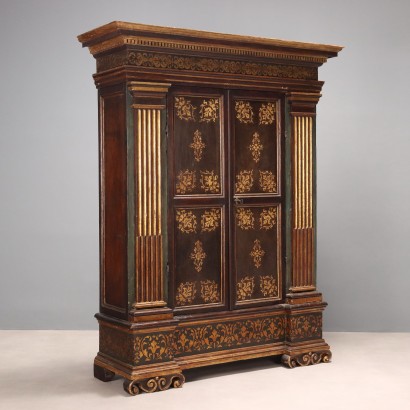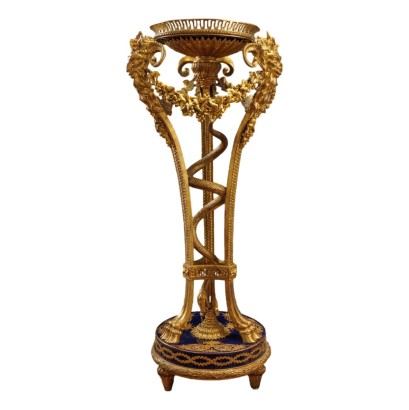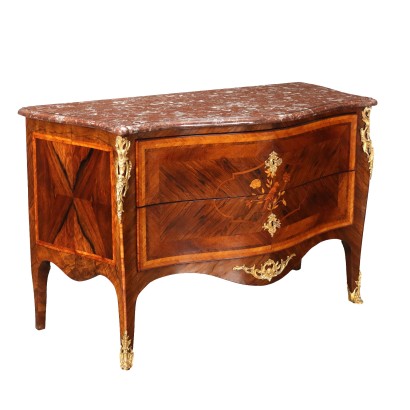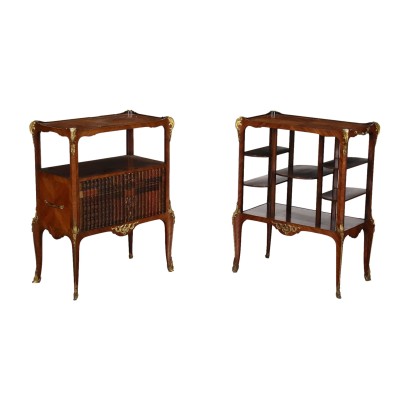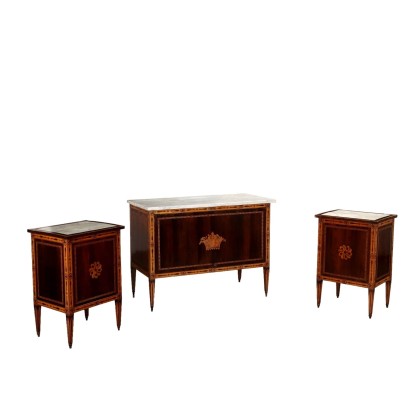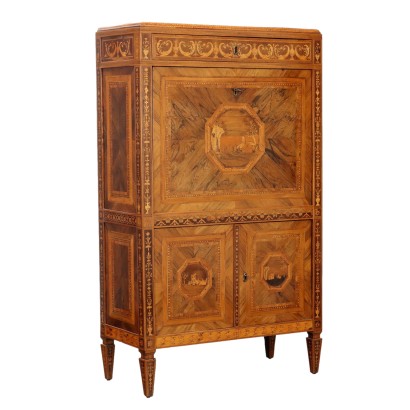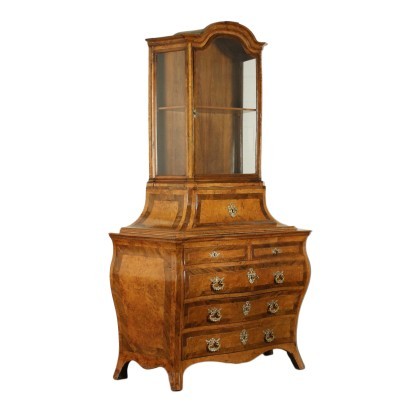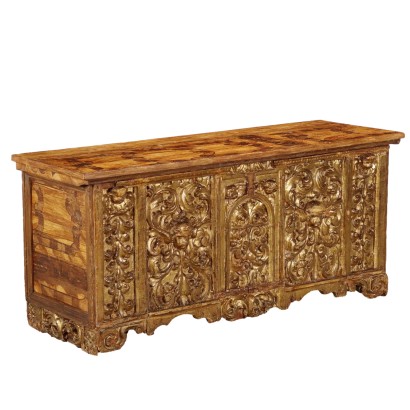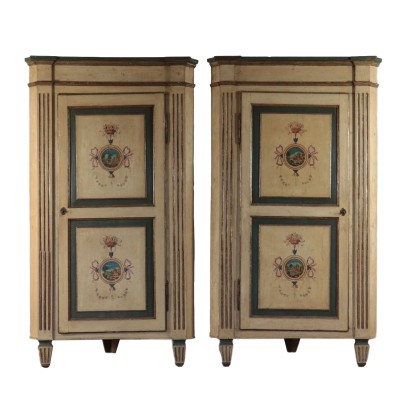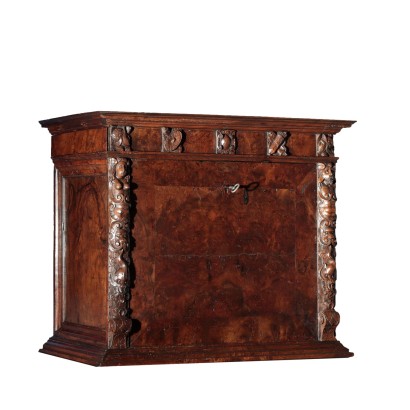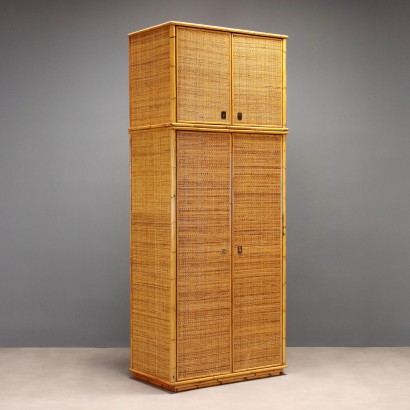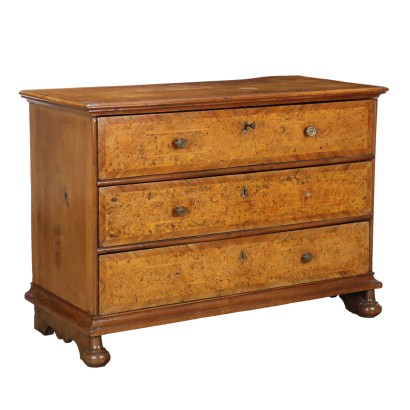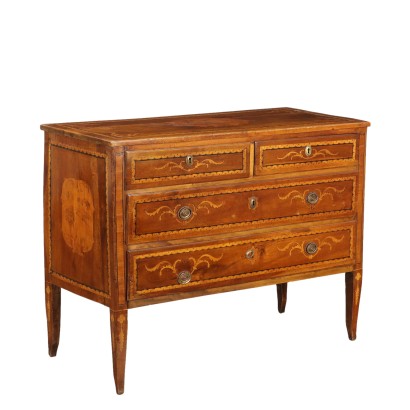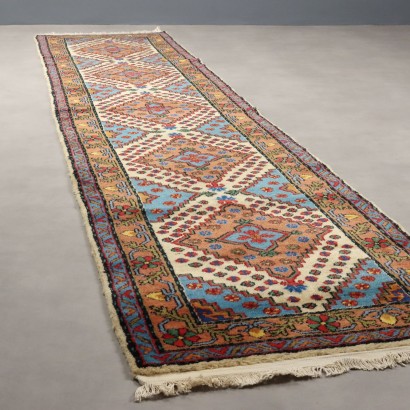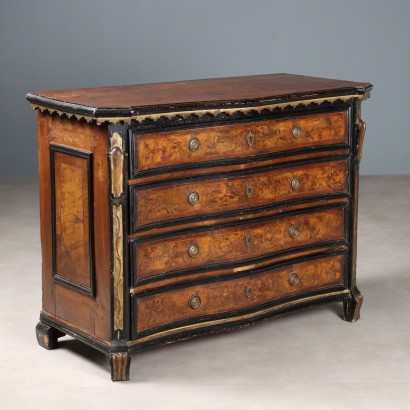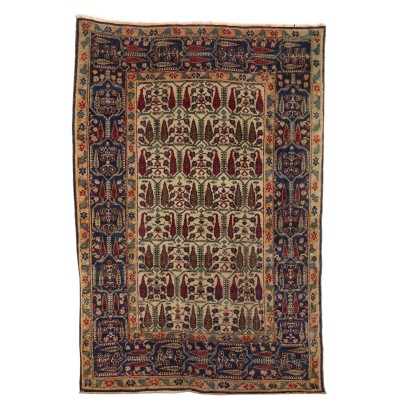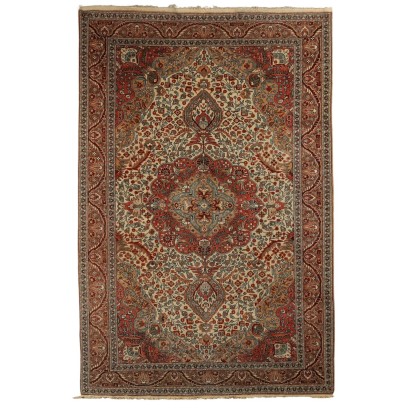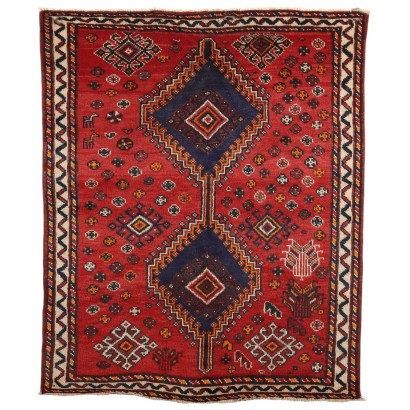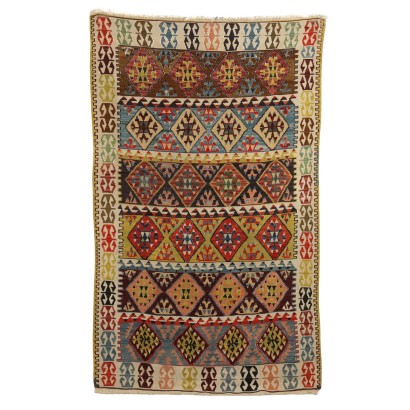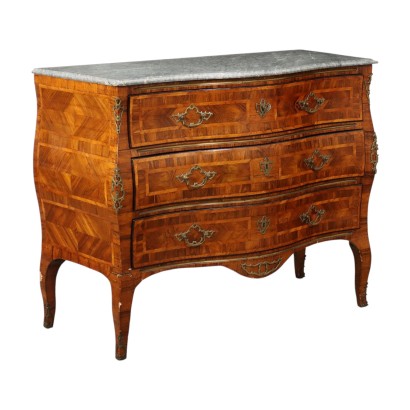Mannerist Wardrobe - Tuscany, early 17th century
Features
Tuscany, early 17th century
Style: Mannerism (1520 - 1630)
Age: 17th Century / 1601 - 1700
Origin: Toscana, Italy
Main essence: Walnut
Description
Mannerist wardrobe in lacquered walnut, with walnut parts, painted parts and gold leaf gilded parts. Front with a pair of externally bipartite doors, gilded leaf decorations in the partitions, internally decorated in tempera with scenes of the Annunciation in the panels, circumscribed by gilded leaf decorations. Uprights with tapered and gilded columns, base and top with painted leaf decorations. Double bracket feet carved with scrolls. Back, base bottom and lock replaced. Tuscany, early 17th century.
Product Condition:
Product that due to age and wear requires restoration and polishing. We try to present the real condition of the furniture as completely as possible with the photos. If some details are not clear from the photos, what is reported in the description is valid.
Maximum size (cm):
Height: 224
Width: 181
Depth: 58
Additional Information
Style: Mannerism (1520 - 1630)
A complex and varied phenomenon, whose identifying traits can be seen in the artists' desire to resume the forms and styles of the Renaissance, leading however to an evolution.
In fact, if the original desire of many protagonists of this period is to produce works "in the manner of" masters such as Raphael or Michelangelo, the changed cultural conditions lead to outcomes that some scholars have defined as "anti-Renaissance".
This is because the tendency is to go beyond the search for a representation of man and nature as realistic and orderly as possible, introducing elements that will then be fully developed in the Baroque.
Find out more with our insights:
FineArt - Mannerism
The dictionary of antiques - Savonarola
The Austrian taste of Baroque
The charm of ancient Egypt
The rebirth of sacred art in the 17th century
Age: 17th Century / 1601 - 1700
17th Century / 1601 - 1700Main essence: Walnut
Walnut wood comes from the plant whose botanical name is juglans regia , probably originally from the East but very common in Europe. Light or dark brown in color, it is a hard wood with a beautiful grain, widely used in antique furniture. It was the main essence in Italy throughout the Renaissance and later had a good diffusion in Europe, especially in England, until the advent of mahogany. It was used for solid wood furniture and sometimes carvings and inlays, its only big limitation is that it suffers a lot from woodworm. In France it was widely used more than anything else in the provinces. In the second half of the eighteenth century its use decreased significantly because mahogany and other exotic woods were preferred.Material:
Stained
Gilded
Other customers have searched:
Approfondimenti
Per saperne di più sugli armadi antichi, consulta i nostri approfondimenti:Semplicità e funzionalità dell'armadio lombardo tra '600 e '700
Gli arredi di antiquariato by FineArt
Uno stipo toscano tra XVI e XVII secolo
Sull'antiquariato in generale dai un'occhiata anche a
Classic Monday: da un pezzo dei nostri magazzini alla storia dell'antiquariato
L'antiquariato dalla A alla Z: il Dizionario dell'Antiquariato
Il dizionario dell'antiquariato - Lastronatura
Il dizionario dell'antiquariato - Mascherone
Il dizionario dell'antiquariato - Natura morta
Il dizionario dell'antiquariato - Opificio
Il dizionario dell'antiquariato - Pastiglia
Il dizionario dell'antiquariato - Savonarola
Il dizionario dell'antiquariato - Rosone
Intaglio barocco con motivo a ricciolo
Product availability
Immediate availability
Ready for delivery within 2 working days from ordering the product.

